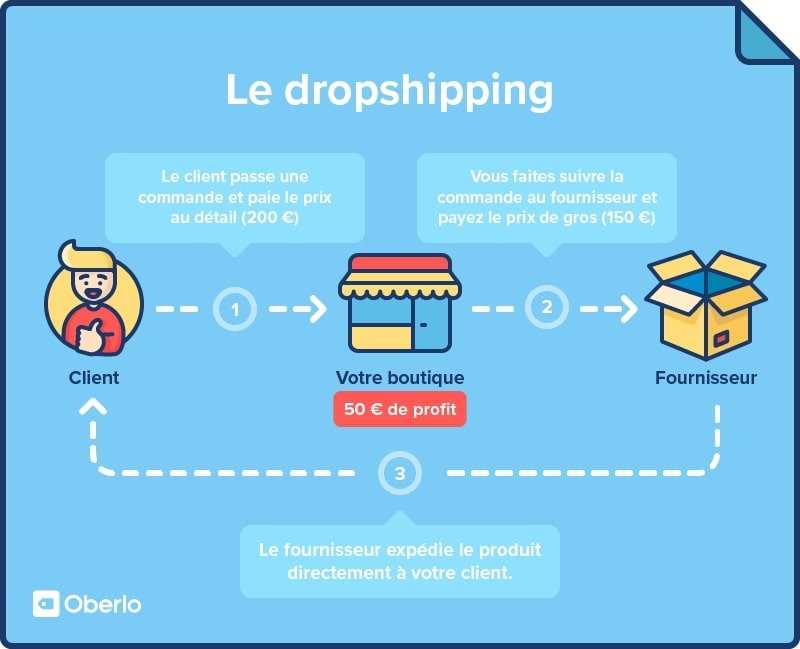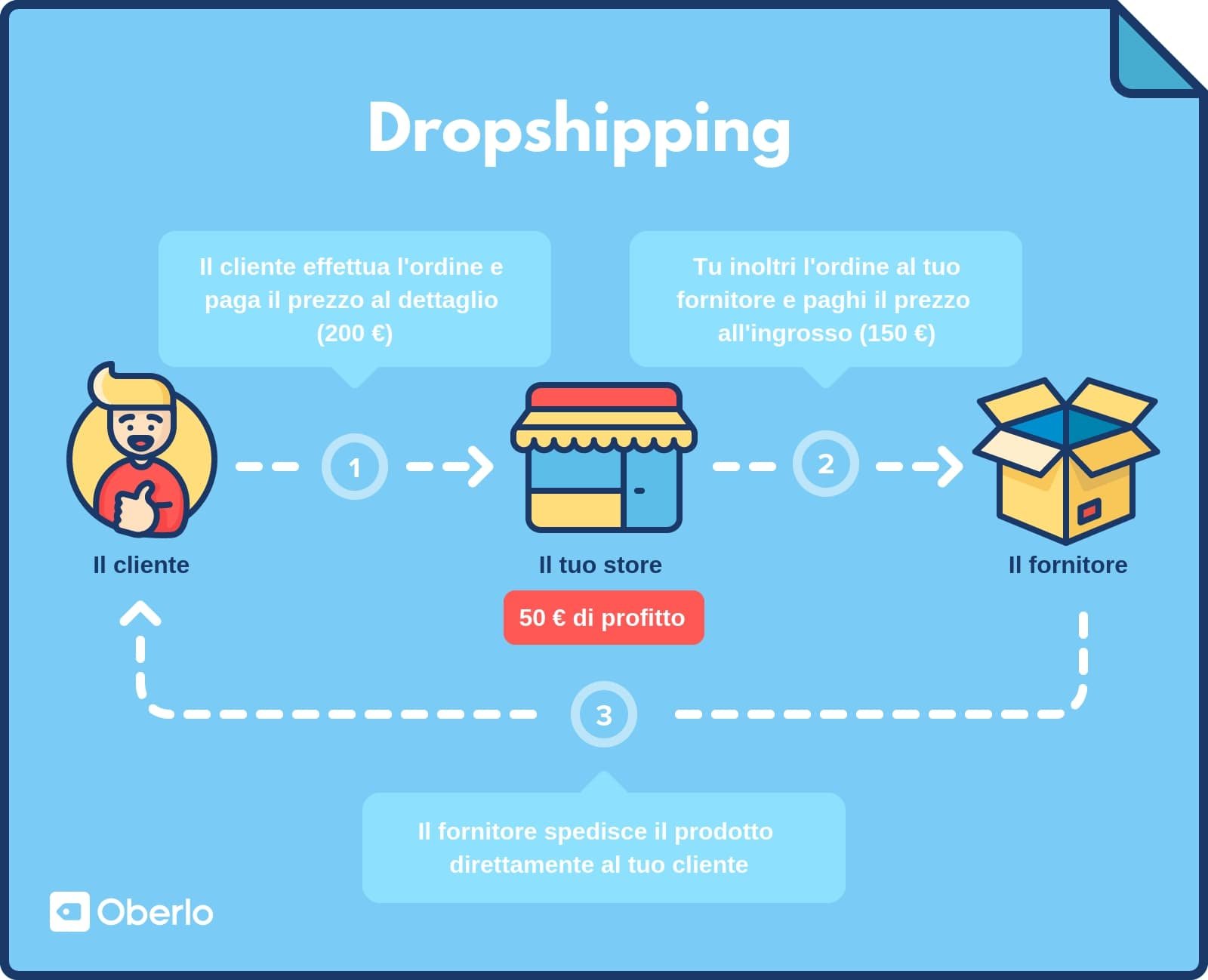Step into the fascinating world of dropshipping, where the art of commerce meets the realm of secrets waiting to be unraveled. Prepare to embark on a journey that uncovers the enigmatic inner workings of this intriguing business model. Brace yourself, dear reader, as we dive headfirst into the abyss of knowledge, determined to decode the mysteries that lie beneath the surface of dropshipping. With an unbiased and neutral perspective, we will navigate through the labyrinth of suppliers, shipping logistics, and customer satisfaction, shedding light on the hidden truths that will help you grasp the very essence of this unconventional method of trade. So, fasten your seat belts, dear readers, as we embark on this enthralling adventure, committed to unlocking the secrets, one by one, and peering beyond the veil that shrouds dropshipping’s inner workings.
Table of Contents
- 1. Revealing the Mechanics: Understanding the Fundamentals of Dropshipping
- 2. Cracking the Code: Strategies for Finding Reliable Dropshipping Suppliers
- 3. Unveiling the Profitability: Optimizing Pricing and Margins in Dropshipping
- 4. Unleashing the Potential: Key Tactics for Effective Marketing in Dropshipping
- Q&A
- Insights and Conclusions

1. Revealing the Mechanics: Understanding the Fundamentals of Dropshipping
Dropshipping may sound like a mysterious concept at first, but fear not, as we are here to demystify its inner workings for you! Whether you’re an aspiring entrepreneur or simply intrigued by the world of e-commerce, understanding the fundamentals of dropshipping is crucial for success in this ever-evolving industry. So, let’s dive right in!
In a nutshell, dropshipping is a business model that eliminates the need for inventory storage and upfront capital investment. Instead of purchasing products in bulk and managing stock, dropshipping allows you to partner with suppliers who handle the fulfillment process on your behalf. Here’s how it unfolds:
- You set up an online store and showcase products from your chosen suppliers.
- A customer places an order on your website and pays you the retail price.
- You forward the order details to the supplier, who then ships the products directly to the customer.
- The difference between the retail price and the wholesale price (paid to the supplier) becomes your profit.
Now, here’s where dropshipping truly shines – since you’re not handling inventory, the overhead costs are significantly reduced. You don’t have to worry about packaging, shipping logistics, or managing returns. This allows you the freedom to focus on marketing, customer service, and building your brand. Additionally, dropshipping enables you to offer a wide variety of products without the need for a physical store, providing endless opportunities and flexibility.

2. Cracking the Code: Strategies for Finding Reliable Dropshipping Suppliers
When it comes to dropshipping, finding reliable suppliers can make or break your business. But fear not, aspiring entrepreneurs! We’re here to unlock the secrets and help you decode the inner workings of this crucial step. Below, we’ve compiled a list of strategies and best practices that will lead you to trustworthy suppliers, ensuring a smooth and successful dropshipping journey.
1. Conduct thorough research: Don’t settle for the first supplier that catches your eye. Take the time to research multiple suppliers, comparing factors such as pricing, product quality, and customer reviews. This will provide you with a comprehensive understanding of the market and allow you to make an informed decision.
2. Reach out and communicate: Establishing a strong relationship with your potential suppliers is key. Don’t hesitate to contact them directly to discuss their policies, shipment methods, and any other concerns you may have. Clear and open communication will not only give you a sense of their reliability but will also build a foundation for mutual trust.
3. Attend trade shows: Trade shows provide an excellent opportunity to meet potential suppliers face-to-face and learn about their products firsthand. These events are a goldmine for networking and making valuable connections within the dropshipping industry.
By utilizing these strategies, you’ll be well on your way to cracking the code and finding reliable dropshipping suppliers. Remember, a strong supplier partnership is the backbone of a successful dropshipping business. Happy sourcing!

3. Unveiling the Profitability: Optimizing Pricing and Margins in Dropshipping
In the fast-paced world of dropshipping, one key factor that can make or break your business is pricing and margins. Optimizing this aspect requires a careful balance between attracting customers with competitive prices and ensuring healthy profit margins. In this post, we will delve into the secrets of unlocking profitability in dropshipping by exploring effective strategies to optimize pricing and maximize your margins.
First and foremost, conducting thorough market research is crucial in determining the ideal price point for your products. By analyzing your competitors’ pricing strategies, you can gain valuable insights into industry trends and customer expectations. Additionally, keep an eye out for any unique selling points or added value you can offer to justify a higher price. Remember, your pricing should not only cover the cost of acquiring products and shipping, but also account for overhead expenses, marketing efforts, and desired profit margins.
To optimize your margins, there are a few strategies you can implement. Firstly, consider leveraging volume discounts from suppliers. By purchasing products in bulk, you can negotiate better prices and increase your profit per sale. Furthermore, implementing a tiered pricing structure can incentivize customers to purchase larger quantities, increasing your order size and overall revenue. Another effective approach is to focus on upselling and cross-selling complementary products. By suggesting additional items or upgrades at the point of purchase, you can boost both the value of each transaction and your profit margins. Lastly, don’t overlook the power of upselling through value-added services such as expedited shipping or extended warranties, which can justify higher prices and provide an edge over competitors.
With these effective strategies and tactics in mind, optimizing pricing and unlocking profitability in the world of dropshipping becomes an achievable goal. Remember to continuously monitor market trends, experiment with different pricing strategies, and adapt your approach based on customer feedback and insights. By finding that sweet spot between attracting customers and ensuring healthy profit margins, you can build a successful and thriving dropshipping venture. So, gear up and embrace the exciting journey of decoding dropshipping’s inner workings!
4. Unleashing the Potential: Key Tactics for Effective Marketing in Dropshipping
Marketing in dropshipping can be a game-changer if done right. It’s not just about listing products and waiting for customers to come knocking on your virtual door. To truly succeed in this competitive space, you need to unleash the potential of dropshipping by implementing key tactics that drive traffic, engage customers, and boost sales. Here are some strategies to take your dropshipping business to the next level:
- Influencer Collaboration: Explore partnerships with popular influencers in your niche. By teaming up with relevant influencers, you can tap into their established audience and leverage their authority to promote your products. This can significantly increase your brand exposure and drive targeted traffic to your dropshipping store.
- Content Marketing: Create high-quality and informative content related to your products. This can be in the form of blog articles, videos, or infographics. By providing valuable content that solves problems or answers questions for your target audience, you position yourself as an authority in your niche and build trust with potential customers. Remember to optimize your content for search engines to drive organic traffic to your store.
- Social Media Advertising: Leverage the power of social media platforms to reach a wider audience. Platforms like Facebook, Instagram, and Pinterest offer robust advertising options that allow you to target specific demographics and interests. Use high-quality visuals, compelling copy, and precise targeting to create impactful ads that capture the attention of potential customers.
- Customer Reviews and Testimonials: Encourage your satisfied customers to leave reviews and testimonials on your website or social media channels. Positive feedback acts as social proof and helps build credibility for your dropshipping store. Displaying genuine reviews and testimonials prominently can persuade hesitant shoppers to make a purchase.
- Retargeting Campaigns: Implement retargeting campaigns to reach potential customers who have shown interest in your products but haven’t made a purchase. By placing cookies on their devices, you can display targeted ads to remind them of the products they viewed, encouraging them to revisit your store and complete their purchase.
These tactics are by no means exhaustive, but they provide a solid starting point for effective marketing in dropshipping. Remember, mastering the art of marketing takes time and continuous experimentation. Stay attuned to the latest trends, analyze data, and adapt your strategies accordingly. With persistence and a deep understanding of your target audience, you can unlock the secrets of dropshipping’s inner workings and achieve sustainable success.
Q&A
Q: What is dropshipping and how does it work?
A: Welcome to the fascinating world of dropshipping! It’s a unique business model in which you, as the retailer, don’t need to keep any inventory. Instead, you partner with a supplier who handles the warehousing and shipping of products directly to your customers. Essentially, you act as a middleman, allowing you to focus solely on marketing and customer service.
Q: What are the benefits of dropshipping for entrepreneurs?
A: Ah, the perks of dropshipping are aplenty! Firstly, it requires minimal upfront investment since you don’t need to stock inventory. This makes it an excellent option for aspiring entrepreneurs on a tight budget. Additionally, it eliminates the hassle of managing inventory, packaging, and shipping, allowing you more time to focus on growing your business. It also offers the freedom to work from anywhere since you won’t be tied down to a physical store.
Q: How do I find reliable suppliers for my dropshipping business?
A: Ah, the quest for reliable suppliers! It’s essential to partner with reputable companies that can deliver quality products promptly. One of the simplest ways to find suppliers is by using dedicated dropshipping platforms like AliExpress, Oberlo, or SaleHoo. These platforms enable you to browse through a vast range of products and connect with verified suppliers. Additionally, attending trade shows or reaching out to manufacturers directly are also effective means of finding reliable partners.
Q: What are some effective marketing strategies for dropshipping businesses?
A: Ah, the art of marketing! In the vast online marketplace, it’s crucial to stand out from the crowd. One of the most effective ways to attract customers is through targeted advertising on platforms like Facebook and Instagram. Influencer marketing is another technique that can yield fantastic results. Building an engaging social media presence, optimizing your website for search engines, and implementing email marketing campaigns are also key strategies for driving traffic and increasing conversions.
Q: How can I ensure a smooth customer experience in my dropshipping business?
A: Ah, providing a delightful customer experience is paramount! Communication is key, so make sure to respond promptly and professionally to customer inquiries. You can build trust by displaying customer reviews and testimonials on your website. Setting realistic shipping expectations and providing tracking numbers promptly can also help manage customer expectations. Remember, going the extra mile to resolve any issues or concerns will go a long way in establishing a loyal customer base.
Q: Is dropshipping a sustainable long-term business model?
A: Ah, the question of sustainability! Dropshipping can indeed be a viable long-term business model, but success hinges on several factors. Building a unique brand, offering competitive pricing, continuously sourcing trending and desirable products, and providing exceptional customer service are crucial for long-term success. Additionally, adapting to changes in the market, monitoring and optimizing your marketing strategies, and maintaining good relationships with suppliers are all key to staying competitive and thriving in the dynamic world of dropshipping.
Q: What are some challenges of dropshipping that entrepreneurs should be aware of?
A: Ah, the challenges that bring growth! While dropshipping has numerous advantages, it also comes with its fair share of obstacles. Since you don’t control the inventory, there is always the risk of products going out of stock or being discontinued by suppliers. This can lead to potential customer dissatisfaction if stock management is not handled carefully. Additionally, competition is fierce in the dropshipping realm, so constantly adapting your marketing strategies and maintaining a strong online presence is crucial.
Q: Is dropshipping suitable for all types of products?
A: Ah, the question of product suitability! Dropshipping can be suitable for a wide variety of products, including electronics, clothing, accessories, homeware, and more. However, it’s crucial to consider factors like shipping costs, supplier reliability, and profit margins when selecting products. Some items may have higher shipping costs or lower profit margins, making them less suitable for dropshipping. It’s always a good idea to conduct market research and choose products with high demand and good profit potential.
Q: Can dropshipping be combined with other business models?
A: Ah, the art of hybrid business models! Dropshipping can indeed be combined with other business models to maximize profits. Many entrepreneurs choose to integrate dropshipping with affiliate marketing, where they promote other companies’ products and earn a commission on each sale. Others opt for white-label or private-label dropshipping, where they work with manufacturers to create custom-branded products. The possibilities are vast, so feel free to explore and experiment with different models to find what works best for you.
Q: Are there any legal considerations for dropshipping businesses?
A: Ah, the realm of legality! While dropshipping itself is a legitimate business model, it’s crucial to familiarize yourself with the legal requirements of your country or region. These may include obtaining necessary licenses or permits, ensuring compliance with consumer protection laws, and addressing potential tax obligations. It’s advisable to consult with a legal professional or an accountant to ensure adherence to all legalities and protect your business from any potential legal issues.
The Way Forward
As we come to the end of our journey into the intricate web of dropshipping, we hope we have shed light on the enigmatic inner workings that lie beneath its surface. Through this exploration, we have unraveled the secrets and decoded the hidden mechanisms that drive this ever-evolving business model.
Peering through the lens of our curiosity, we were able to witness the delicate dance between suppliers, retailers, and customers. It became evident that behind the convenience and seeming simplicity of dropshipping lies a deeply interconnected ecosystem. From finding the right suppliers to crafting compelling marketing strategies and maintaining stellar customer service, each step is essential to maintain the delicate balance of success.
In this labyrinth of opportunities, we have discovered the power of leveraging technology and analysis to navigate the e-commerce landscape. By harnessing the potential of automation, data-driven decisions, and seamless integrations, dropshippers can transcend geographical boundaries and achieve unparalleled scalability.
Yet, it is vital to acknowledge that beneath its promising façade, dropshipping also has its fair share of challenges and uncertainties. The need for relentless dedication, ongoing learning, and adaptability cannot be understated. Dropshipping demands constant vigilance, as failure to keep up with trends and changing market dynamics can leave one behind in the wake of fierce competition.
So, as we bid adieu to the enchanting world of dropshipping, we implore both aspiring and seasoned entrepreneurs to seize the opportunities it presents with both ambition and caution. Armed with newfound knowledge and a firm understanding of its inner workings, one can master its intricacies and navigate the currents of this exciting business model.
Let us remember that within the realm of dropshipping, success hinges upon the fusion of innovation, strategic partnerships, and unwavering determination. So, dare to explore the uncharted territories of this landscape, embracing the possibilities that lie within. Unlock the secrets, decode the complexities, and embark on an adventure that could redefine the rules of commerce.

